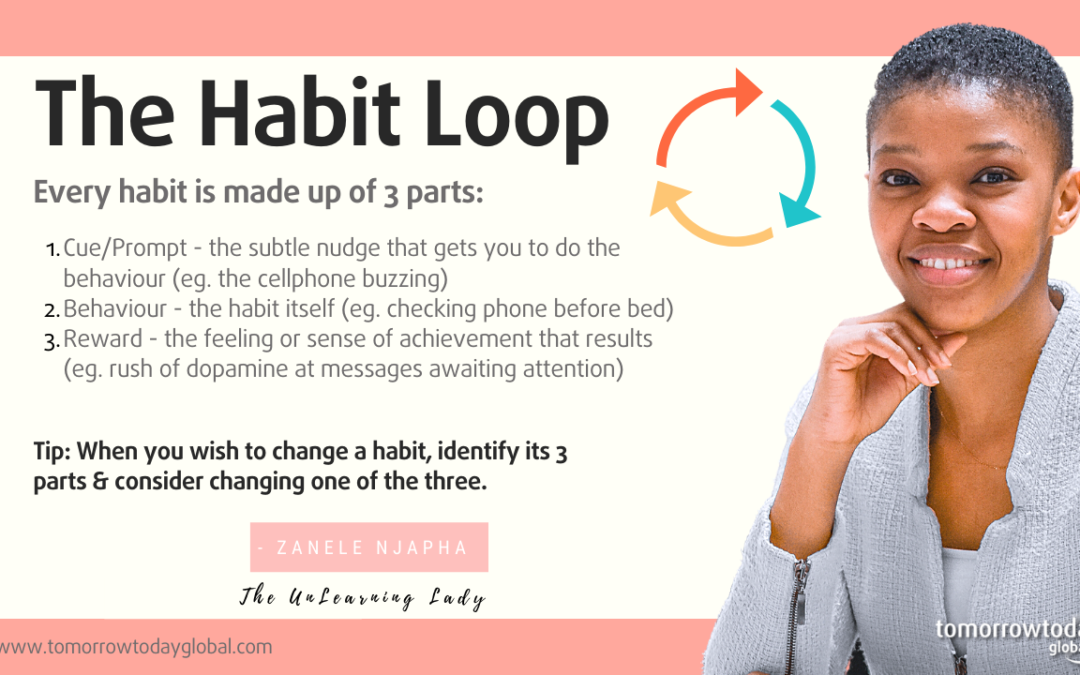There it is again – that annoying habit that just won’t go away!
Believe it or not, there is method to the habit madness. It’s called the Habit Loop.
Often when we think about our behaviours or habits, we just see the action itself (eg. Waking up to Facebook posts – first thing in the morning).
The habit loop, however, splits every single habit or behaviour into 3 different parts. This helps you and me to not only understand our habits better but helps us unlearn them and even grow them.
Here are the 3 parts to the Habit Loop:
- Cue – I often refer to this as the ‘nudge’ or ‘prompt’. This is what happens before the behaviour, acting as a cue that invites you to perform the habit. In the above case of checking Facebook first thing in the morning, the cue would be the cellphone’s buzzing or the notifications that pile up on your home screen.
- Behaviour/Habit – This is the part that we see and witness, that we would term as the ‘habit’. Eg. Checking your phone as soon as you wake up or falling asleep to the blue light of your device shining on your face.
- Reward – This is possibly the least noticed part of a habit or behaviour. It is in essence a chemical reaction to your habit. What may be easier to notice is a feeling of accomplishment, pride, belonging etc. that performing the behaviour makes you feel, thus encouraging you to do it again. I sometimes refer to this as the ‘cookie’ you get from your brain for the behaviour. In our cellphone example, the reward would be a buzz of dopamine (feel-good hormone) that gets released when you have answered those texts and fulfilled your ‘obligations’ to respond and interact with others.
Now, it’s one thing to know how the habit loop manifests itself, but the reason why it’s a powerful framework to understand is that we can use it change our habits!
Tip: When you wish to rearrange or unlearn that annoying habit that just won’t go away, begin by breaking it down into its 3 parts. Take your time with this.
Once that is done, consider how you might either 1. remove or quieten the cue or 2. introduce a new behaviour to respond to the cue, or even 3. consider removing or replacing the reward.
Excited to try this out?
Shoot us an email to arrange a quick call in the coming weeks. Zanele is happy to explore ideas with you on how your team can use the habit loop to build empowering rituals.
All the best!
References:
Duhigg, Charles (2013). The Power of Habit: Why we do what we do, and how to change.
Clear, James (2018). Atomic Habits: An easy and proven way to build good habits and break bad ones.
In the face of disruptive change, Zanele, author of today’s Tuesday Tip, assists organizations to become future fit: adaptable, resilient, innovative, proactive and confident through helping them crack the unlearning code.
She does this by facilitating the understanding that learning, unlearning and relearning must be the crux and heart of an organisation’s DNA if they are serious about being future-fit.


